
Technical analysis books can be helpful for traders who want to learn more about using technical analysis in their trading. Technical analysis books help the study of financial market data, such as price, volume, and open interest, to predict how prices will move in the future. Technical traders use charts and other technical indicators to find patterns and trends that can be good trading opportunities.
Technical analysis books give an in-depth look at the different tools and methods of technical analysis including how to use them, when to use them, and how to read the signals they send. Technical analysis books also give examples of how these tools have been used in different market conditions and explain the pros and cons of each tool.
In addition to teaching you about specific technical analysis tools, technical analysis books also help you with things like risk management, trader psychology, and making a trading plan. Overall, technical analysis books can be helpful for traders who want to learn more about using technical analysis in their trading.
1. Getting Started in Technical Analysis by Jack Schwager
“Getting Started in Technical Analysis” by Jack Schwager is an excellent book for people who want to learn about the basics and uses of technical analysis. In the first part of this book, you’ll learn about technical analysis, including its history and the different kinds of charts and indicators used in it. The book also talks about important ideas like analyzing trends, the difference between support and resistance, and chart patterns.
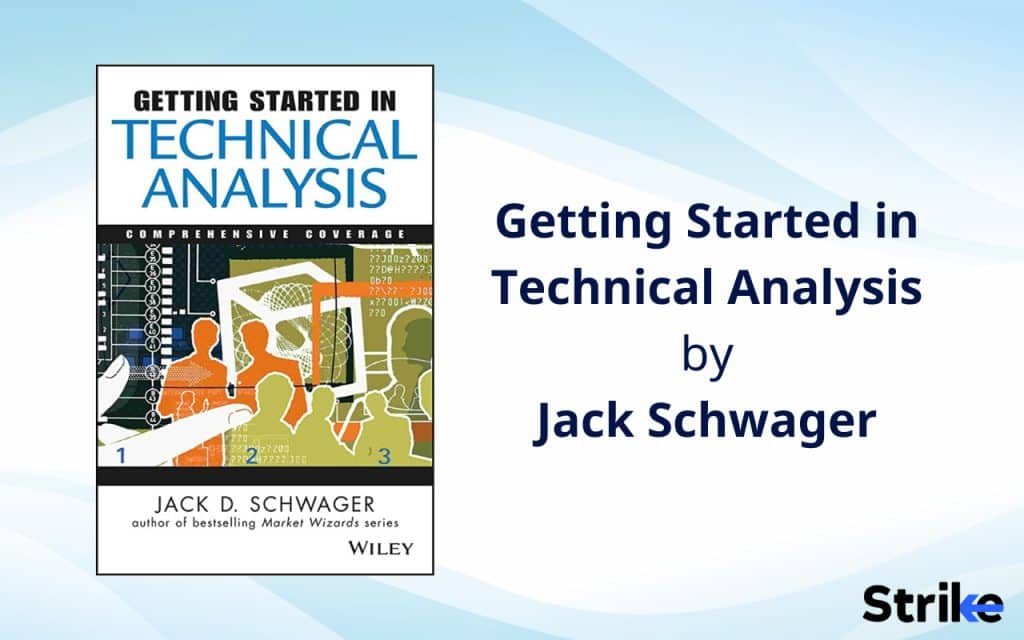
The second part of the book is about how to use technical analysis in the real world. The book has chapters on how to use technical analysis in different markets, such as stocks, futures, and currencies. The author also talks about different trading strategies and how to use technical analysis to put them into action. He shows the ideas with examples from everyday life.
The last part of the book talks about the mental aspects of trading and how important it is to handle both risk and emotions well. The author talks about how important it is to understand and control your emotions when trading. The author emphasizes the importance of understanding and managing the emotional side of trading and provides valuable tips and strategies to help traders avoid common mistakes.
Jack Schwager’s book Getting Started in Technical Analysis came out for the first time in 1999. This book is considered a classic among traders, and both new and experienced traders still use it a lot. People think of this book as a complete guide to technical analysis, and it gives a clear and easy-to-understand introduction to the topic.
The readers generally liked this book, which has a good rating of 4.1 out of 5 stars on Goodreads and 4.3 out of 5 stars on Amazon, which shows that most readers found the book to be informative and helpful.
The price of the book depends on the edition and where you buy it, but in general, the paperback version costs $25 to $30 and the Kindle version costs $15.
Overall, this book is an excellent great resource for people who are new to technical analysis and want to learn more about how it works and how it can be utilized. The author’s style of writing is clear and easy to understand, and he gives a lot of useful information and examples from real life to show how the ideas work. This is a good resource for both new and experienced traders who want to learn something new. The book goes into enough detail about technical analysis to give you a good idea of what it’s all about, but also enough to show you that it’s just one way to look at the market.
2. Japanese Candlestick Charting Techniques by Steve Nison
The best book on how to use Japanese candlestick charting techniques in the West is “Japanese Candlestick Charting Techniques” by Steve Nison. Since it came out in 1991, the book has become a reliable resource for traders, investors, and other people who work in the financial markets. The author, Steve Nison, is widely regarded as the foremost authority on Japanese candlesticks, and he is the author of other publications on the topic.

This book is a detailed introduction to the use of candlestick charts for technical analysis. This book also covers a wide range of themes, including the history of candlestick charting, the types of candlestick patterns, and how to utilize them in different markets and different timeframes. In addition, the book provides examples taken from real-world situations as well as recommendations for applying candlestick charts when trading.
This book is a detailed introduction to the use of candlestick charts for technical analysis. This book also covers a wide range of themes, including the history of candlestick charting, types of candlestick patterns, and how to utilize them in different markets and different timeframes. In addition, the book provides examples taken from real-world situations as well as recommendations for applying candlestick charts when trading.
The book is widely regarded as having achieved a great deal of success, as a significant number of traders and investors have found it to be an exceptionally helpful resource in the course of their trading and investment endeavors. On Goodreads, it has received 4.5 out of 5 stars, and on Amazon, it has received 4.7 out of 5 stars, which indicates that the majority of people who have read it found it interesting and helpful. The author’s writing style is described as being clear and succinct in most of the reviews, as well as the book’s extensive collection of useful material and examples drawn from the actual world are also praised.
The price of the book depends on the edition and the store, but in general, the paperback version costs around $30 to $40, and the Kindle version costs around $15 to $20.
Any trader or investor who is interested in learning more about the application of candlestick charts in technical analysis is strongly encouraged to read “Japanese Candlestick Charting Techniques” by Steve Nison. This book comes highly recommended, is considered a “must-read,” and is widely regarded as one of the greatest books that can be obtained on the subject. This book is a valuable resource that offers a thorough introduction to the issue. The book is very easy to read because of the author’s experience and writing style, and it contains a wealth of real-world examples that may be applied to enhance your trading.
3. Elliott Wave Principle by A.J. Frost, Robert R. Prechter Jr., Charles J. Collins
Elliott Wave Principle by A.J. Frost, Robert R. Prechter Jr., and Charles J. Collins is a well-known book about the Elliott Wave principle, a method of technical analysis that looks for patterns in the way markets move. The book came out for the first time in 1978, and since then, traders and investors have made it a classic. The authors, A.J. Frost and Robert R. Prechter Jr. are known for their expertise in Elliott wave analysis, and Charles J. Collins was the publisher and editor of the Elliott Wave Theorist newsletter.

The book gives a full explanation of the Elliott wave principle and talks about the essential ideas and tools used in the field. The authors explain the principle in detail and give real-world examples to help readers understand and use the principle in different markets and at different times. Also in the book are tips on how to use Elliott wave analysis in trading.
The price of the book may vary based on the edition and the store, although the paperback version is often available for $30 to $40 and the Kindle version for $15 to $20.
The book is a good resource for traders because it goes into detail about the Elliott Wave Principle and explains the ideas and strategies that go along with it. This book has 4.5 out of 5 stars on Goodreads and 4.2 out of 5 stars on Amazon, which means that most people who read it thought it was exciting and valuable.
4. Technical Analysis of the Financial Markets by John Murphy
Technical Analysis of the Financial Markets by John Murphy is a widely respected and highly recommended book on technical analysis. People think of the book as a complete guide to the subject because it talks about a wide range of technical analysis tools and ideas. Since its initial publication in 1999, the book has established itself as a classic in the technical analysis community and has gotten good reviews from both academics and experienced traders, and most people agree that it is a thorough and reliable guide to the subject.
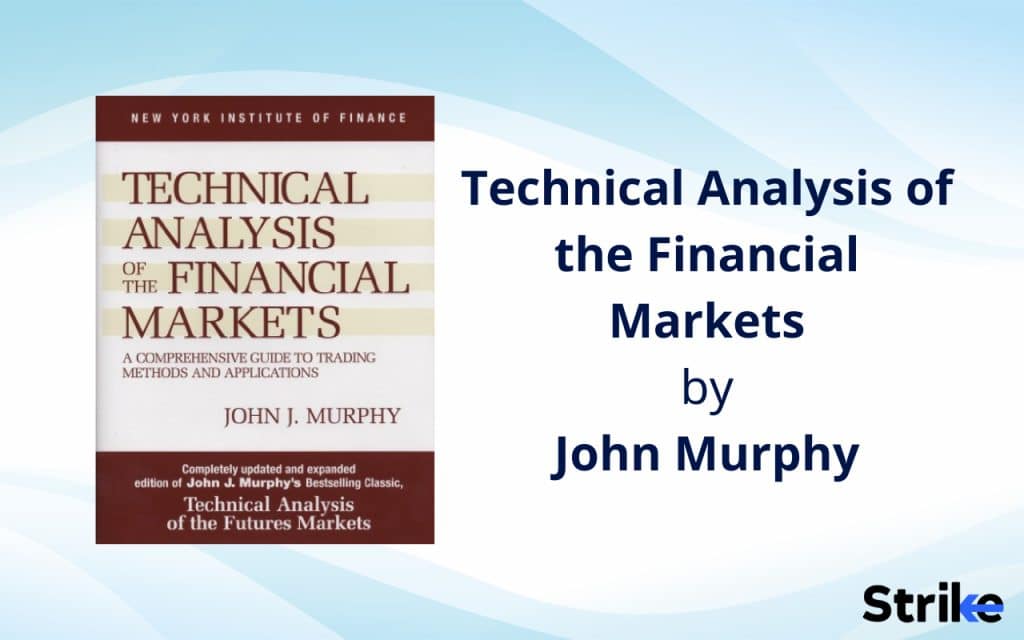
Chart patterns, indicators, and trading systems are only a few of the technical analysis tools and concepts covered in the book. In addition, it provides a thorough history of technical analysis’s development.
The book also has a lot of examples and charts to show how key ideas work in real life, which can help people who are just starting out understand how technical analysis works. Also, the book gives a balanced view of technical analysis, pointing out both its strengths and weaknesses. This can help people who are new to technical analysis understand its shortcomings.
The book has a 4.5-star rating on Amazon, with a lot of reviewers complimenting its clear writing and comprehensive treatment of the subject. Currently, the hardcover edition of the book costs roughly $40, while the Kindle version costs $15.
The book has received praise from well-known technical traders, including Marty Schwartz and Linda Raschke, who called it a “must-read” for anyone interested in technical analysis.
5. Technical Analysis 3rd Edition by Charles Kirkpatrick II and Julie R. Dahlquist
The third edition of Technical Analysis gives a thorough introduction to the theory of technical analysis, including both supporting and opposing academic evidence. Using updated illustrations and examples, the authors dig into the analysis of both markets and individual stocks and provide comprehensive investment methods and portfolio management plans. This book covers a vast array of issues, including sentiment and momentum indicators, seasonal effects, the movement of capital, and risk mitigation methods.
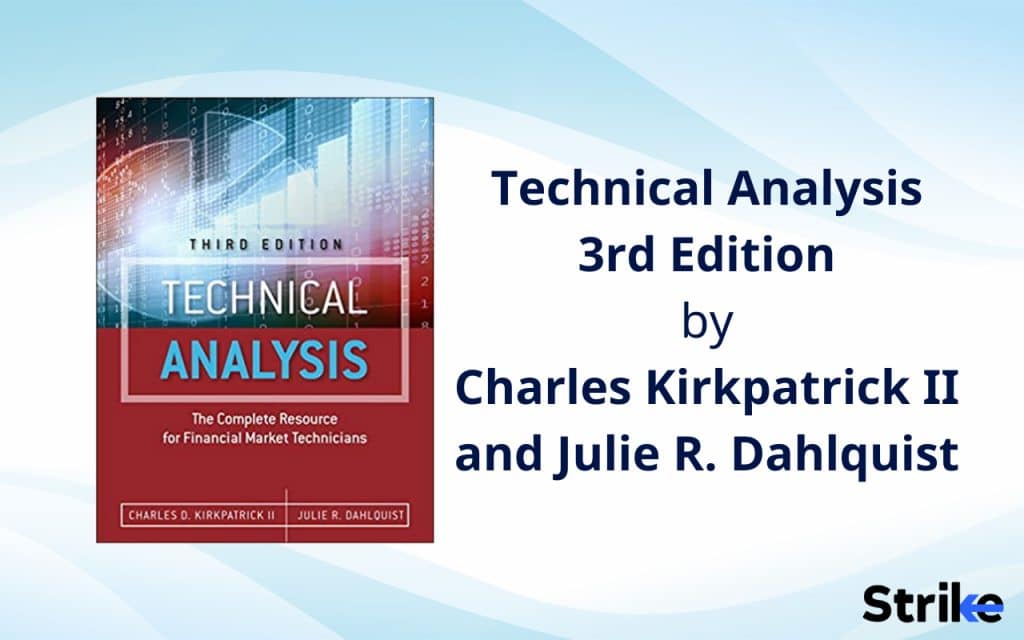
This version, which includes 30% new content, focuses on specialized indicators like Kagi, Renko, Kase, Ichimoku, Clouds, and DeMark, innovations in exit stops, portfolio selection, and testing. In addition to the most recent advances in pattern recognition, market analysis, systems management, and confidence testing, and also discusses the influence of behavioral bias and the recent performance of old formulas and methods. This guide is vital for traders, researchers, and serious investors who seek to profit from technical analysis.
The book is available in print and as an e-book, and it costs a fair amount so that it can be read by a wide range of people. This book is also available in most stores, both online and in stores.
Both experts in the field of trading and readers have said good things about the book. Most people have said that it covers much ground level, is easy to read, and is also considered one of the best books on technical analysis, which shows how successful it is.
Regarding recommendations, the book is a must-read for anyone who wants to learn about technical analysis. The book is well-written and easy to understand for traders and investors of all levels. Also, the authors are well-known experts in their fields, which gives the information in the book more credibility.
Overall, Charles Kirkpatrick II and Julie Dahlquist’s “Technical Analysis: The Complete Resource for Financial Market Technicians,” 3rd edition, is a must-read for anyone who wants to learn about technical analysis and gives a complete and useful guide to the topic, making it a useful tool for traders and investors of all skill levels.
6. Encyclopaedia of Chart Patterns by Thomas Bulkowski
The Encyclopaedia of Chart Patterns by Thomas Bulkowski is a comprehensive guide to chart pattern analysis in the field of technical analysis. The book was first published in 2005 and has since become a widely respected resource in the field of technical analysis. Thomas Bulkowski is one of the world’s foremost authorities on technical analysis. He has written books and articles on the subject, including the widely acclaimed Encyclopedia of Chart Patterns. His decades-long study of market structure and stock patterns has earned him a well-deserved reputation among traders and analysts alike. With nearly three decades in the markets, he has developed an enviable graphical method of charting techniques, Wave Theory, Fibonacci numbers, and other tools to assist investors in identifying profitable opportunities.
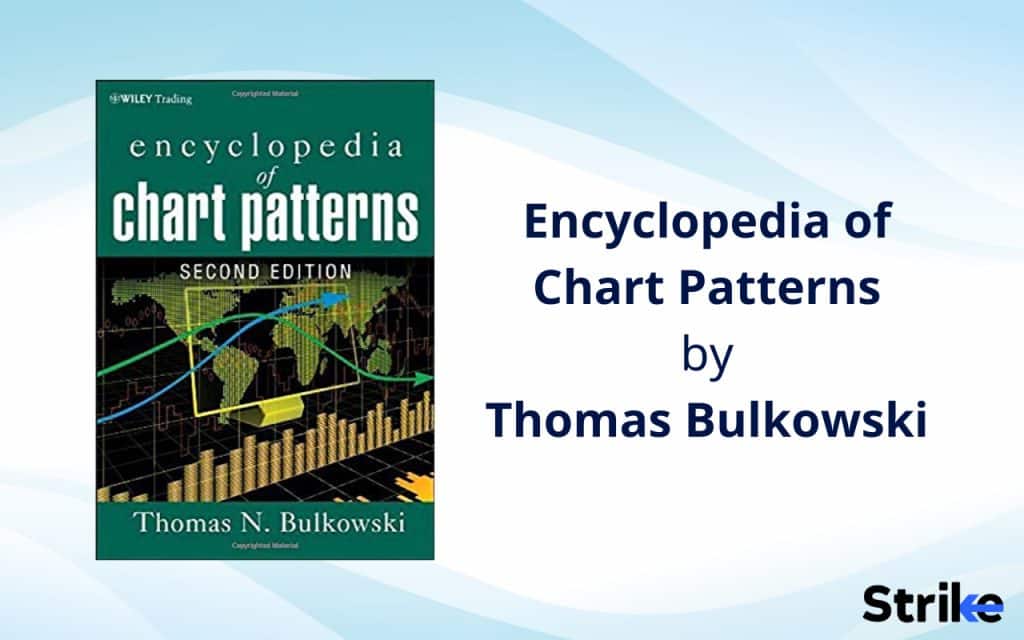
The Encyclopedia of Chart Patterns by Thomas Bulkowski is an essential reference guide for all trading professionals. This book is a comprehensive and in-depth look at different chart patterns, outlining their characteristics, advantages, signals, and potential pitfalls. The book provides clear instructions on how to identify chart patterns correctly, with detailed illustrations and explanations that can be utilized by novice traders as well as veterans. The book covers a wide range of chart patterns, including both bullish and bearish patterns, and includes detailed information on the performance and trading implications of each pattern. This book also includes statistical data on the performance of each pattern, making it a valuable resource for traders and investors looking to improve their chart pattern analysis skills.
Additionally, Thomas Bulkowski covers various price action strategies and methods for continued analysis of chart patterns as well as capitalizing on them. This book includes helpful guidelines for establishing a sound trading system tailored to individual goals and objectives. Valuable insights from real-world examples are included to enhance the understanding of chart patterns further. Expertly written and easy to follow, this title offers an invaluable resource for any serious trader or investor who wants to make better decisions when it comes to market analysis.
The book has a 4.5-star rating on Amazon, and reviewers like how it goes into detail about chart patterns and is easy to use. The hardcover version of the book costs about $70, while the Kindle version costs $35.
The Encyclopedia of Chart Patterns by Thomas Bulkowski is seen as a complete and useful book for traders and investors who want to learn about chart pattern analysis. Experts say that anyone who wants to improve their technical analysis skills should read it.
7. Technical Analysis Using Multiple Timeframes by Brian Shannon
“Technical Analysis Using Multiple Timeframes” is written by Brian Shannon, a well-known technical analyst and founder of AlphaTrends.net. The book was first published in 2009 and provided a comprehensive guide on how to use multiple timeframes to improve one’s technical analysis skills.
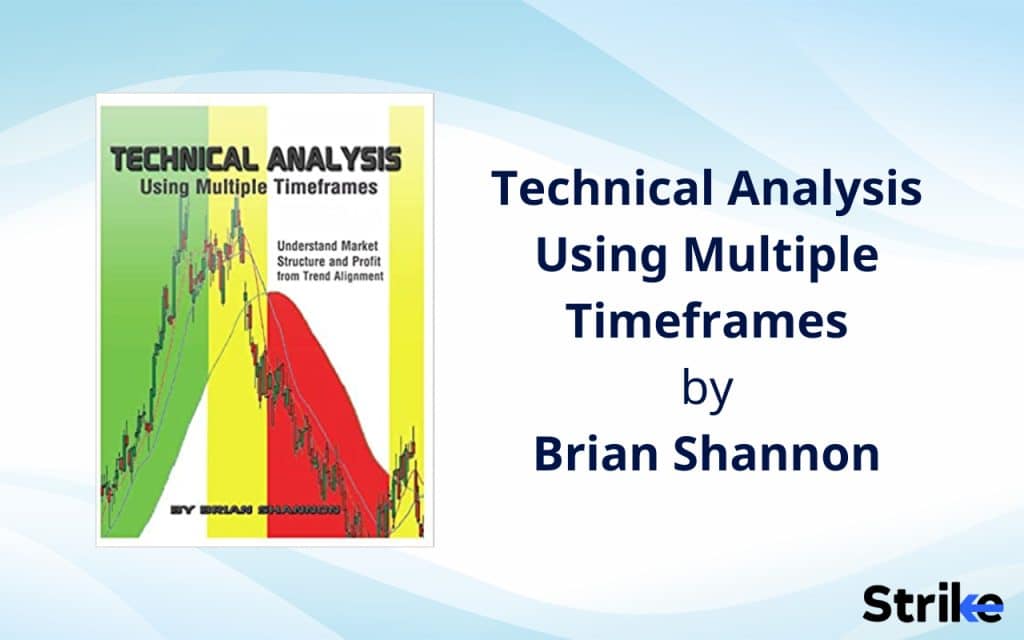
The book covers a wide range of topics, including chart patterns, indicators, and risk management techniques, and provides examples and case studies to illustrate the concepts discussed. Shannon also emphasizes the importance of discipline and patience in technical analysis and encourages traders to develop their own trading systems.
The book has received generally positive reviews, praising Shannon’s clear and concise writing style and the practical nature of the information provided. On Amazon, it has an average rating of 4.4 out of 5 stars from over 200 reviews.
Currently, the book is priced around $40 for the paperback edition and $10 for Kindle edition, which is considered reasonable for a book of its depth & quality. The book is recommended for traders of all levels in general who is looking to improve their technical analysis skills and gain a deeper understanding of how to use multiple timeframes in their trading.
8. Technical Analysis from A to Z by Steven Achelis
“Technical Analysis from A to Z,” written by Steven Achelis, was published for the first time in the year 2000. Technical analysis is a means of evaluating securities by studying statistics created by market activity, such as past prices and volume. This book is a thorough reference to the topic of technical analysis, which is a method of evaluating securities using this method. The book covers a wide variety of subjects, which include Elliott Wave Theory, market breadth, chart patterns, and indicators.
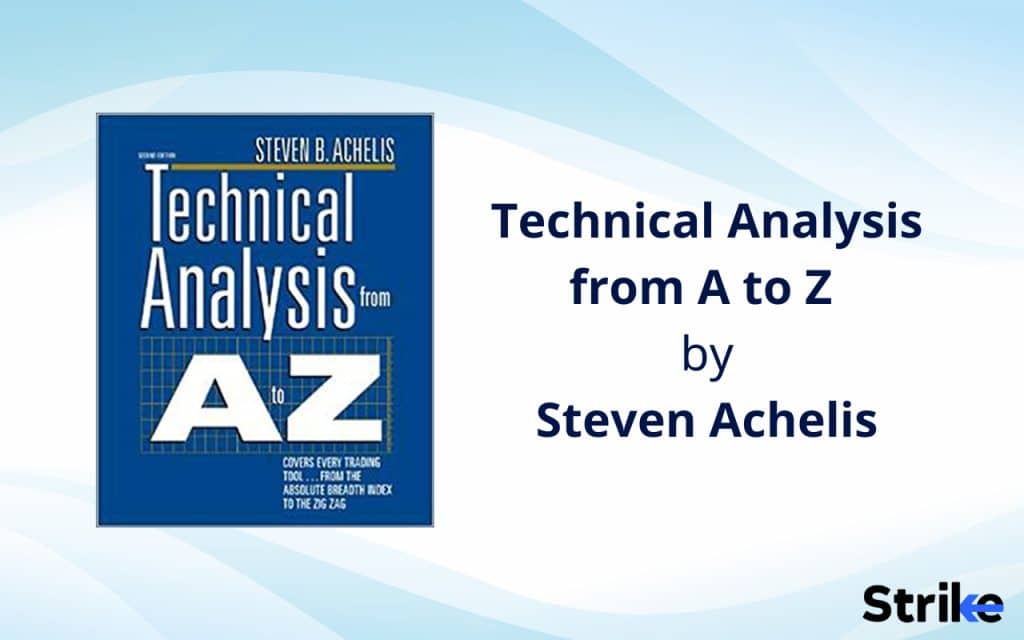
The author, Steven Achelis, is widely regarded as an authority on the subject of technical analysis, and he has been active in the business of providing financial services for more than three decades. He established Equis International, the company that developed the MetaStock software, which is an industry standard and a favorite tool among technical analysts.
Readers have had positive reactions to the book, and experts in the subject of technical analysis believe it to be a seminal work in the discipline. This book is widely regarded as an exhaustive resource for both inexperienced traders and seasoned professionals. The book is written in a language that is easy to grasp, and it contains examples as well as charts to illustrate the various essential themes.
You can purchase this book online at Amazon and other internet shops for a price that falls somewhere between $20 – $30. Additionally, it can be found on e-book sites. This book has maintained a stable level of sales throughout the course of time, and most traders believe it to be the definitive guide to technical analysis.
For those who are interested in learning more about technical analysis, the book “Technical Analysis from A to Z” is an excellent resource that comes highly recommended. This book is an exhaustive guide that is prepared by an expert in stock market technical analysis and is easy to grasp, which makes it available to traders of all levels. This book covers a wide variety of subjects because traders who are interested in enhancing their knowledge of technical analysis will find this book to be an extremely helpful resource.
9. Market Wizards: Interviews with Top Traders by Jack Schwager
“Market Wizards: Interviews with Top Traders” book offers a unique and in-depth look into the world of trading and investing. Written by the well-known author, trader, and fund manager Jack Schwager, the book is a compilation of interviews with the most successful traders in history, including Paul Tudor Jones, Marty Schwartz, and Bruce Kovner. The interviews in this book offer a glimpse into the personal histories and methods of these traders, providing readers with a unique perspective on the trading business.

One of the most distinctive features of this book is the author’s ability to provide an inside look into the thoughts and decision-making processes of successful traders. This is not something that is typically featured in other trading books and makes “Market Wizards” a valuable resource for traders of all skill levels. The book is written in a simple and easy-to-understand manner, making it accessible to traders of all skill levels.
“Market Wizards” was first published in 1989 and has since become a classic in the trading and financial sectors. This book has sold over a million copies worldwide and is widely regarded as a must-read for anyone in the trading and financial world. The book is available in both physical and digital formats and can be purchased from most bookshops and online merchants. The price of the book may vary depending on the format and reseller, but it is generally considered to be reasonable.
The book has received a lot of favorable reviews, with most of the readers praising the author’s ability to provide an insider’s insight into the thoughts of successful traders. This book is frequently recommended to traders of all skill levels and to anyone interested in learning about the markets and the tactics employed by successful traders.
In conclusion, “Market Wizards: Interviews with Top Traders” is an excellent resource for anyone interested in trading and investing. This book provides an in-depth look into the techniques and mentalities of the most successful traders in history and is a must-read for anyone wishing to enhance their trading skills. This book is highly suggested that you add this book to your reading list.
10. Technical Analysis Explained by Martin Pring
“Technical Analysis Explained” is considered one of the most comprehensive guides to technical analysis. The book is well-organized and written clearly and concisely, making it simple for readers of all levels to understand the concepts discussed. This book is also known for its practical approach and includes various examples, case studies, and real-life scenarios to make the learning process more engaging and relatable.
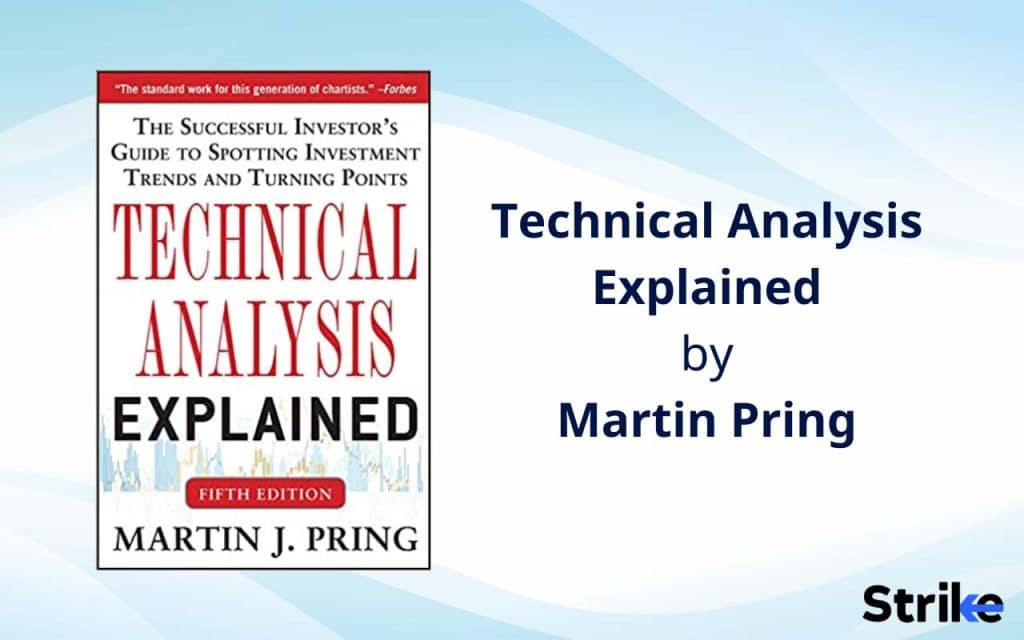
Chart patterns, indicators, and trading methods are just a few of the topics explored in this comprehensive book. This book provides a detailed explanation of various chart patterns such as head and shoulders, double and triple bottoms, and flags and pennants. The book also covers multiple indicators, such as moving averages, the relative strength index, and stochastic oscillators, and how they can be used to identify market trends and make trading decisions. Additionally, the book also provides an overview of different trading strategies, including swing trading, position trading, and day trading.
One of the best things about the book is that it focuses on risk management and keeping your emotions in check while trading. This book emphasizes the need for a well-defined trading plan and the importance of sticking to it and also highlights the importance of cutting losses and not letting emotions drive trading decisions.
The book has been updated and published over time, and the latest edition includes new information on candlestick charting, intermarket relationships, and Elliott wave analysis. The latest edition also includes new case studies and examples to reflect the changes in the market since the first edition was published.
“Technical Analysis Explained” is considered a classic in the field of technical analysis and has been widely adopted by traders, investors, and financial professionals as a reference and educational resource. Most of the copies have been sold in countries worldwide, and it has been translated into other languages.
“Technical Analysis Explained” by Martin Pring is an excellent resource for those who wish to deepen their understanding of technical analysis and develop more successful investment methods. The book is written by a respected authority in the field of technical analysis and provides a comprehensive overview of the technique, its concepts, and its application. “Technical Analysis Explained” is a highly recommended book for traders, investors, and financial professionals.
11. Technical Analysis for Dummies by Barbara Rockefeller
“Technical Analysis for Dummies” is a book written by Barbara Rockefeller and published in 2006. The book is designed for those who are new to the concept of technical analysis and aims to provide a comprehensive introduction to the subject.
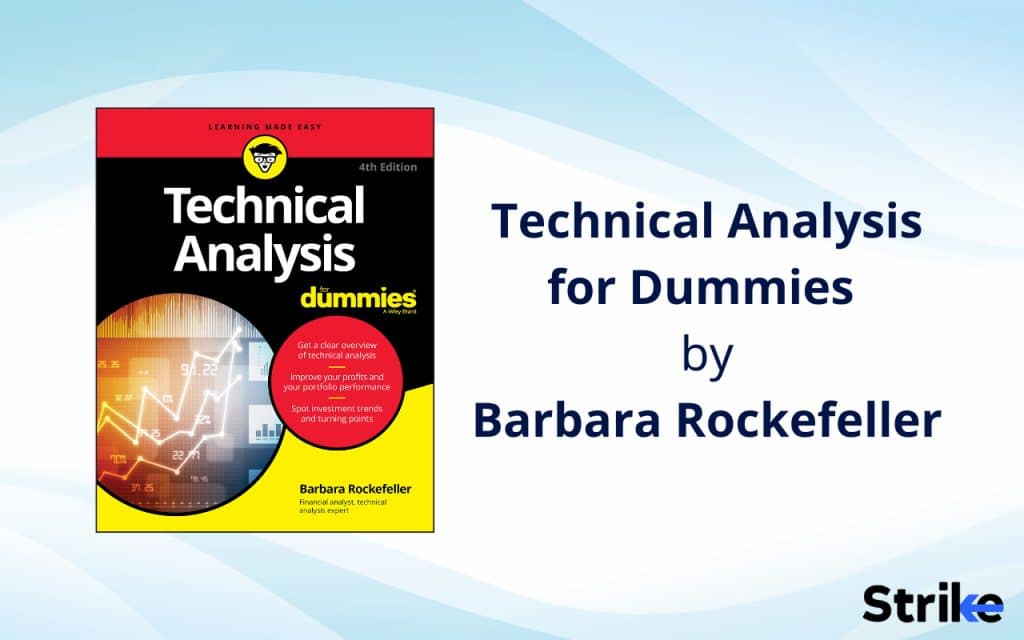
Barbara Rockefeller is a well-known author and expert in the field of technical analysis. She has written books on stock market technical analysis and has regularly contributed to various financial publications. Her knowledge and expertise make her the appropriate author for this book since she has more than 30 years of experience in the sector.
This comprehensive book begins with an overview of technical analysis and then discusses chart patterns, indicators, and trading systems. This book also includes practical examples and case studies to help readers understand the concepts better. The book is well-written and easy to understand, making it a great resource for those who are new to the subject.
The book has received positive reviews from both experts and beginners in the field of trading and is considered a comprehensive technical analysis guide that is highly recommended for anyone looking to learn more about the subject.
The book is available for purchase on various online retailers such as Amazon, and the price varies depending on the edition and format. The book is also available as an e-book. The book “Technical Analysis for Dummies” has been successful in the market and has been able to attract a wide range of readers.
“Technical Analysis for Dummies” is an excellent resource for anyone looking to learn about technical analysis. This book, written by an experienced author who is also an expert in technical analysis, gives a thorough introduction to the subject, is easy to understand, and is highly recommended for anyone who wants to learn more about technical analysis.
12. How to Make Money in Stocks by William O’Neil
“How to Make Money in Stocks,” written by William O’Neil, was published in 1988. This book provides a complete tutorial on how to invest in the stock market profitably. O’Neil is a prominent stock market analyst and the founder of Investor’s Business Daily, a financial and business news publication.
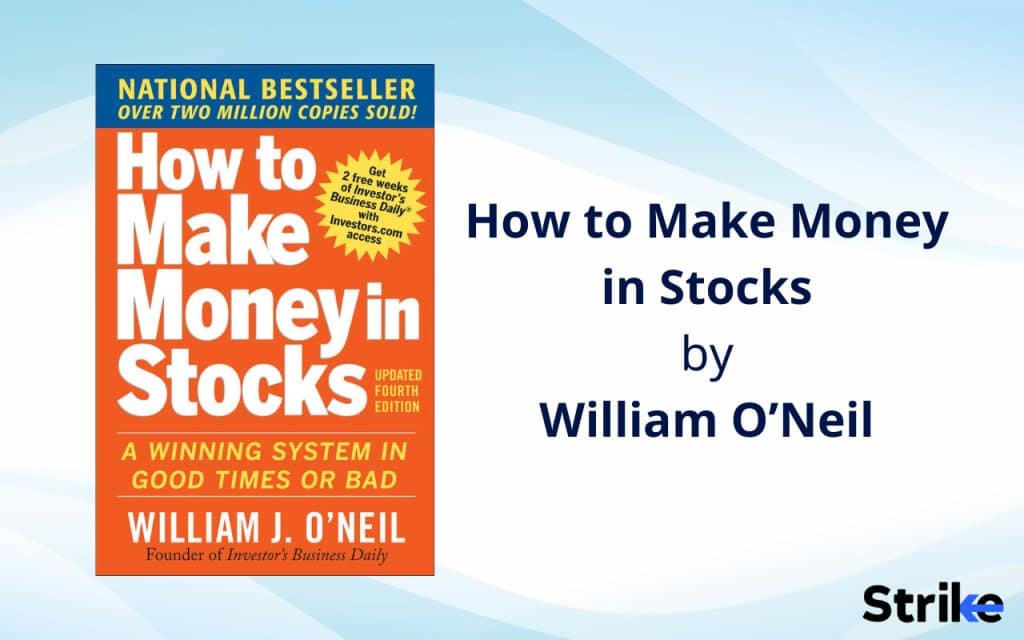
This book delves into a wide range of subject areas, including but not limited to the following: finding stocks with good potential, analyzing market trends, and minimizing risk. O’Neil also provides thorough instructions on how to implement his CAN SLIM investment strategy based on his stock market research and analysis. The method focuses on picking companies with solid fundamentals, such as earnings growth and market dominance, and purchasing equities at the optimal time.
The book has been a tremendous success, selling over 2 million copies around the world, and has been hailed as a classic that requires reading for anyone interested in investing in the stock market. Investors in the stock market have acknowledged the book’s effectiveness in assisting them in making profitable investments.
“How to Make Money in Stocks” is offered in print and electronic editions. The hardcopy book is priced at approximately $25, while the digital version costs $15. The book is easily accessible in bookstores and on the Internet.
The book has consistently been popular in sales since its publication and has been on the best-seller list for consecutive years. This book remains one of the most popular books on investing in the stock market.
13. Technical Analysis of Stock Trends by Robert D. Edwards and John Magee
“Technical Analysis of Stock Trends,” written by Robert D. Edwards and John Magee and first published in 1948, is a crucial work in the field of technical analysis. This book is one of the most complete and authoritative works on technical analysis. Technical analysis is a way to evaluate stocks by understanding data from market activity, such as past prices and volume.
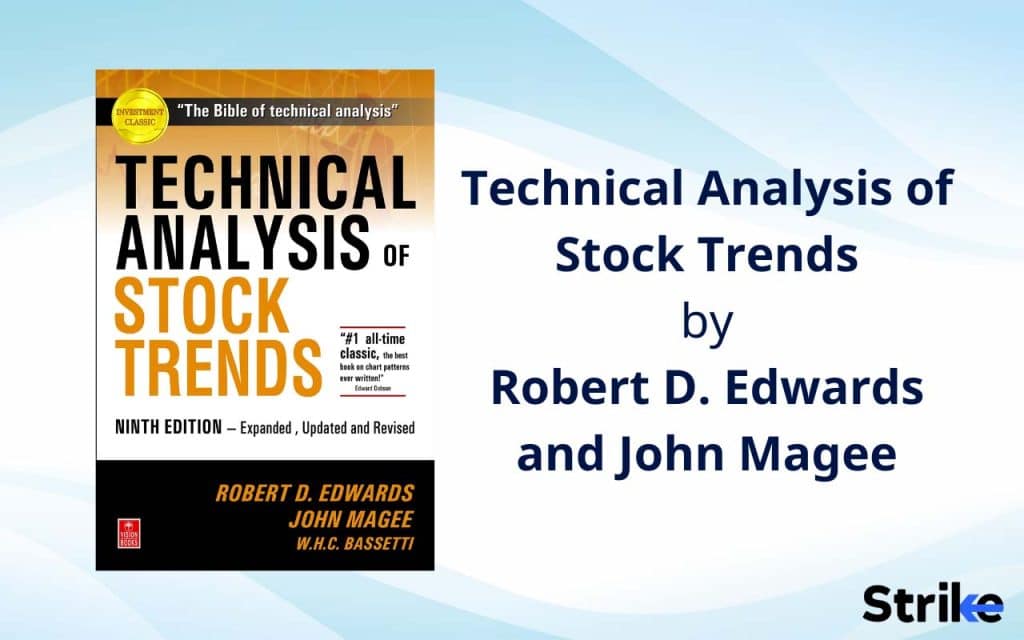
Both Robert D. Edwards and John Magee had a lot of experience trading and analyzing stocks. Edwards was a pioneer in the field of technical analysis and a chartist. On the other hand, John Magee was a journalist who wrote about money and was an expert in technical analysis. Together they bring a lot of knowledge and experience to their book to teach investors about technical analysis and help them understand the tools and methods used to analyze the stock market.
“Technical Analysis of Stock Trends” talks about different things, from the basics of charts and technical analysis to more advanced ideas like spotting trends and figuring out when to buy or sell. The book also has detailed explanations of different indicators and patterns, like moving averages, support and resistance levels, and chart patterns like head and shoulders and triangles. The book also talks about how psychological factors affect the market and how these factors can be used to predict how the market will move.
One of the best things about the book is that it focuses on how technical analysis can be used in real life. The authors use a lot of real-world examples and case studies to show how their ideas work in the real world, making it easy for readers to understand and use the ideas in the book. This book also explains how to create charts and how to read them, as well as how to use technical analysis to make investment decisions.
“Technical Analysis of Stock Trends” has been updated and changed over time since it was first published. The most recent edition came out in 2018. Edwards and John Magee wrote this book more than 75 years ago, and it is still one of the most popular and widely used books on technical analysis. This informative book has been translated into different languages and used as a reference and textbook in universities and trading schools all over the world.
We can buy this book online from places like Amazon, Barnes & Noble, and Books-A-Million. Depending on the edition and format, the price of the book can be anywhere from $20 to $80.
“Technical Analysis of Stock Trends” has been a best-seller for decades, and both experts and traders have highly praised it. People interested in technical analysis and the stock market should read this book. Most traders and investors credit the book for their success on the market, and any serious investor’s library should have it. The authors’ knowledge and experience in the field are evident throughout the book, and the practical approach makes it easy for readers to understand and use the ideas discussed. Also, the book has been around for a long time and is still very popular, which shows that it works as a guide to technical analysis. This book is a timeless classic that is still useful today. Both new and experienced investors can learn a lot from it.
“Technical Analysis of Stock Trends” by Robert D. Edwards and John Magee is a classic and thorough guide to technical analysis that has stood the test of time. Whether you are a new trader or have been doing this for a while, this book is a must-have resource to help you navigate the stock market and make better investment choices. This book is a complete guide to technical analysis that will help you understand the stock market and make better investment decisions.
What makes a Technical Analysis Book excellent?
An Author makes a technical analysis book excellent by combining their expertise, experience, and knowledge of the financial markets. Technical analysis book writer’s expertise helps traders and investors make informed decisions. An excellent author can easily explain complicated technical analysis principles and techniques in a basic and accessible manner, making their book appealing to beginners to experienced traders. A well-researched book that covers current market trends and includes real-life examples boosts the author’s credibility and book worth. A technical analysis book written by an experienced and knowledgeable author provides readers with the tools and information they need to succeed in the financial markets.
What is taught in Technical Analysis Books?
Technical analysis books typically teach about using past market data, such as price and volume, to identify patterns and make trading decisions. The basic principle behind technical analysis is that market trends can be used to forecast future market activity, as illustrated by charts and other technical indicators.
Technical analysis books provide trading instructions. Technical analysis books offer guidance on how to understand charts and other technical indicators and make trading decisions based on this data. Technical analysis books also cover different types of charts and indicators, like moving averages, the relative strength index (RSI), and Fibonacci retracements, among others.
Technical analysis books also provide trading tactics. Technical analysis books give traders a variety of tools for identifying prospective deals and managing risk. The methods may involve chart patterns, momentum indicators, and other technical instruments. Most of the books also present historical instances of the success of these tactics. In addition, they provide advice on how to analyze various methods and determine which may be most suitable for a particular market or trader.
Who should read Technical Analysis Books?
Technical analysis books can be beneficial for a wide range of traders, from beginners to experts. Traders and investors frequently use technical analysis to make decisions based on past market data. Reading books on technical analysis is one of the most effective ways to learn about technical analysis.
Technical analysis books are an excellent resource for beginners; they provide a thorough introduction to the fundamentals of technical analysis and how to make trading decisions using charts and indicators. Technical analysis books can also serve as a solid foundation for additional study and support beginners in gaining a deeper comprehension of market trends and patterns. By reading these books, beginners can learn how to recognize trends and make intelligent judgments that will aid them in trading.
Technical analysis experts can also benefit from reading books on technical analysis. Professionals may get new viewpoints and insights into market trends and patterns, even if they have a solid grasp of technical analysis. In addition, the books may assist traders in honing their trading tactics, spotting new chances, and finding new approaches. Tools and strategies in books on technical analysis can help specialists stay ahead of the curve. Additionally, investors can learn from reading books on technical analysis can assist investors in identifying market patterns and making more educated decisions regarding when to buy or sell a stock by comprehending the fundamental principles of technical analysis. Investors may evaluate market circumstances more accurately and make more intelligent judgments. Technical analysis books are for more than just novices, no matter their degree of experience. Traders and investors can benefit from reading these books because they provide a foundation of information and tactics applicable to various markets and trading styles by understanding the basics of technical analysis. Traders and investors may make better-informed judgments, resulting in more profitable trades and investments.
Which Technical Analysis Books are Best for Beginners?
The best technical analysis books for beginners are listed below.
- Getting Started in Technical Analysis by Jack Schwager: A comprehensive guide to understanding and applying the basics of technical analysis in the financial markets.
- Technical Analysis for Dummies by Barbara Rockefeller: A beginner-friendly introduction to the principles of technical analysis and how to use them to make informed trading decisions.
- How to Make Money in Stocks by William O’Neil: A beginner-friendly guide to the basics of stock trading, including tips on using technical analysis to make informed investment decisions.
- Technical Analysis Explained by Martin Pring: A detailed overview of technical analysis concepts, techniques, and tools, with a focus on how to use them in real-world trading scenarios.
How to Choose the Best Technical Analysis Books?
Reading reviews and summaries of books may help you determine if the content of a technical analysis book is useful and relevant to your own needs. Consider the author’s expertise and credentials to ensure that the advice in a book on technical analysis is well-grounded in study and experience when picking the book.
Also, people should think about what things they want to learn more about, such as chart patterns or risk management strategies, so they can choose a book that can help them understand those complex ideas. Most importantly, though, readers should pay attention to recent books and articles because they may have more up-to-date information and insights than older books and articles on the same topic. Overall, there are a number of things that need to be considered when choosing a technical analysis book so that a person can find the best one to help them learn more about this complex field.
Do Technical Analysis Books also teach about the Stock Market?
Yes, stock market technical analysis books typically cover the topic of stock market analysis. Technical analysis is known as the process of valuing stocks through the examination of statistics generated by market activity, such as historical prices and trading volume.
Technical analysts believe that the patterns in the market, which can be seen on charts and other types of technical indicators, may accurately forecast future activity. Most technical analysis books provide an in-depth look at various technical indicators and chart patterns and explain how to use them to make investment decisions.
Additionally, these books often give a historical perspective on stock market trends and may offer insights into how to navigate market volatility.
Do technical analysis books also teach about stocks?
Yes, technical analysis books also cover the topic of stocks. Stocks, also known as equities, are traded on stock markets and represent a company’s ownership. Technical analysis can be used to examine the performance of particular stocks and make judgments regarding their buying, holding, or selling.
Best Stock technical analysis books explain how to study and evaluate stocks using technical indicators and chart patterns. Stock technical analysis books may also discuss fundamental analysis, which is a technique for evaluating a stock by analyzing the financial and economic performance of the underlying company.
For instance, a book on technical analysis may explain how to find support and resistance levels on a stock chart, how to use moving averages to detect trends, and how to use candlestick patterns to identify buying and selling opportunities. In addition, the book contains examples of how these technical indicators and chart patterns have been used to make profitable trades in the past.
Technical analysis books may include an overview of the various stock categories, such as blue-chip stocks, penny stocks, and growth stocks, and explain the characteristics and hazards associated with each. In addition, they may offer advice on how to establish a diversified portfolio of equities and control risk using stop-loss orders. In conclusion, technical analysis books frequently cover the subject of stocks and provide much knowledge on how to examine and evaluate particular stocks using technical indicators and chart patterns, as well as fundamental analysis.
Are there Technical Analysis Books that teach about reading Chart Patterns?
Yes, There are Technical Analysis Books that teach about reading chart patterns.
Technical Analysis of the Financial Markets by John J. Murphy: This book is a comprehensive guide to technical analysis, including chart patterns. It covers various types of chart patterns, including reversal patterns and continuation patterns.
Encyclopedia of Chart Patterns by Thomas N. Bulkowski: This book is a reference guide to chart patterns, providing detailed information on more than 50 chart patterns, including their performance statistics and trading tactics.
Japanese Candlestick Charting Techniques by Steve Nison: This book focuses on candlestick charting, which is a popular form of chart analysis, and covers a variety of chart patterns specific to candlestick charts.
These famous Technical Analysis Books teach you about reading Chart Patterns.
Where can I buy Technical Analysis Books?
You can purchase technical analysis books from a variety of sources like Online retailers, specialty bookstores, Direct from publishers, Public Libraries and buy as E-books.
- Online retailers: Websites like Amazon, Barnes & Noble, and Books-A-Million offer a wide selection of technical analysis books and often have customer reviews that can help you make a decision.
- Specialty bookstores: Local and online bookstores that specialize in business and finance may carry a selection of technical analysis books.
- Direct from the publisher: Technical analysis books publishers sell their books directly on their websites.
- Public libraries: Public libraries: Most public libraries carry a selection of technical analysis books that can be borrowed for free.
- E-Books: Technical analysis books are also available in E-Books, which can be downloaded and read on electronic devices like Kindle, iPad, and smartphones and are available on websites like Amazon Kindle, Google Books and other platforms.
In summary, you can buy technical analysis books from a variety of sources such as online retailers, specialty bookstores, direct from the publisher, public libraries, and e-book platforms.
How much is the average cost for Technical Analysis Books?
The price of technical analysis books depends on the edition, the publisher, the format, and the platform.
- Paperback: The technical analysis paperback book cost anywhere from $15 to $40. The number of pages, the author, and the publisher can all change the price.
- E-book: Most of the time, e-books cost less than paper books. Depending on the publisher and the platform, the price of an e-book can be as low as $5 to $15 or even less.
- Online Retailers: Online stores like Amazon and Barnes & Noble usually have a large selection of books about technical analysis and often have sales and discounts. Depending on the book, edition and the seller, prices can differ on these sites.
- Library: Public libraries have books on technical analysis that you can borrow for free if you have a membership in the library. However, there may be a waitlist for popular books, and few libraries may have limited copies.
Note that you can access a few technical analysis books for free on the publisher’s website or on free e-book platforms.
Are there are Technical Analysis Books that is free?
Yes, there are Technical Analysis Books that you can download in PDF format for free from various websites online.
What are other ways to learn about Technical Analysis besides Technical Analysis Books?
Other ways of learning more about technical analysis include online tutorials, books, and through different educational courses.
Options include online courses, YouTube channels, forums and online communities, podcasts and webinars, and following financial news websites and blogs. Coursera, Udemy and LinkedIn Learning are a few platforms offering courses on technical analysis, which vary in cost and complexity. You can also look for dedicated YouTube channels and Reddit or TradingView forums to learn from experienced traders and discuss with fellow traders. Listening to podcasts or joining webinars hosted by experts is a great way to get up to date with the latest trends. Following reputable financial news outlets and blogs will help sharpen your technical analysis skills and improve your trading strategies.
It’s essential to diversify your learning sources and take advantage of online courses, YouTube channels, forums, podcasts, webinars, and financial news websites. You will be able to gain a deeper understanding of technical analysis and improve your trading strategies by actively engaging with multiple learning platforms.
What is the best way to learn Technical Analysis?
The best way to learn technical analysis involves a combination of theoretical knowledge, practical application, and continuous improvement. You could start by reading books about technical analysis. Some popular titles include “Technical Analysis of the Financial Markets” by John J. Murphy, “Japanese Candlestick Charting Techniques” by Steve Nison, and “Technical Analysis from A to Z by Steven Achelis”. Additionally, consider enrolling in online courses or attending seminars that focus on technical analysis.
Practice your skills by analyzing historical price charts and identifying various patterns, such as the shooting star candlestick, once you have gained a foundational understanding. Consider using trading simulation software to apply your knowledge in a risk-free environment as your skills improve. It is essential to stay up to date with market trends and developments by following reliable financial news sources and discussion forums as well.
Do Technical Analysis hard to learn?
Yes, technical analysis is a bit challenging for beginners, but with dedication and practice, one can master it. Starting with the basics is often the key. Learn about essential tools and concepts such as support and resistance to understanding the basics before you start applying them.
What are the Best Technical Analysis Books for Indian Traders?
The best technical analysis books for Indian traders are:
- Japanese Candlestick Charting Techniques by Steve Nison – This book is a comprehensive guide on the use of candlestick charts for technical analysis.
- Technical Analysis of the Financial Markets by John Murphy – This book covers various technical analysis techniques and their applications to different financial markets.
- Technical Analysis Using Multiple Timeframes by Brian Shannon – This book focuses on using multiple timeframes in technical analysis to make more informed trading decisions.
- Technical Analysis Explained by Martin Pring – This book provides a comprehensive overview of various technical analysis techniques, including chart patterns and indicators.
The books mentioned above are considered to be the best resources for Indian traders, as they cover the basics of technical analysis and provide practical insights and techniques that can be applied to the Indian stock market.
What is Technical Analysis?
Technical analysis is a widely used method of evaluating securities by studying statistical trends and price movements. It involves identifying patterns and trends in the market to predict future market behavior using charts and technical indicators. This approach is based on the principle that historical price data and patterns are used to forecast future price movements. Technical analysts use tools like moving averages and momentum indicators to analyze market data and make informed trading decisions by identifying underlying market trends.
What Is the Purpose of Technical Analysis?
The purpose of technical analysis is to analyze historical market data, such as price and volume, to identify patterns and trends to make informed investment decisions. Technical analysts use charts and other tools to visualize and interpret market data to predict future price movements.
What is the importance of Technical Analysis Books?
The importance of technical analysis books is to provide traders and investors with a comprehensive understanding of financial markets through technical analysis techniques and tools. Technical analysis books offer historical market data, market trends and patterns, and a deeper understanding of market psychology and investor behavior. Studying technical analysis through these books helps increase the chances of success in financial markets by providing a complete and objective view of the market.








![85 Common Stock Market Terminologies for Dummies [Updated List for 2026] 160 85 Common Stock Market Terminologies for Dummies [Updated List for 2025]](https://www.strike.money/wp-content/uploads/2025/04/Popular-Stock-Market-Terms-for-Beginners-Banner.png)










No Comments Yet.